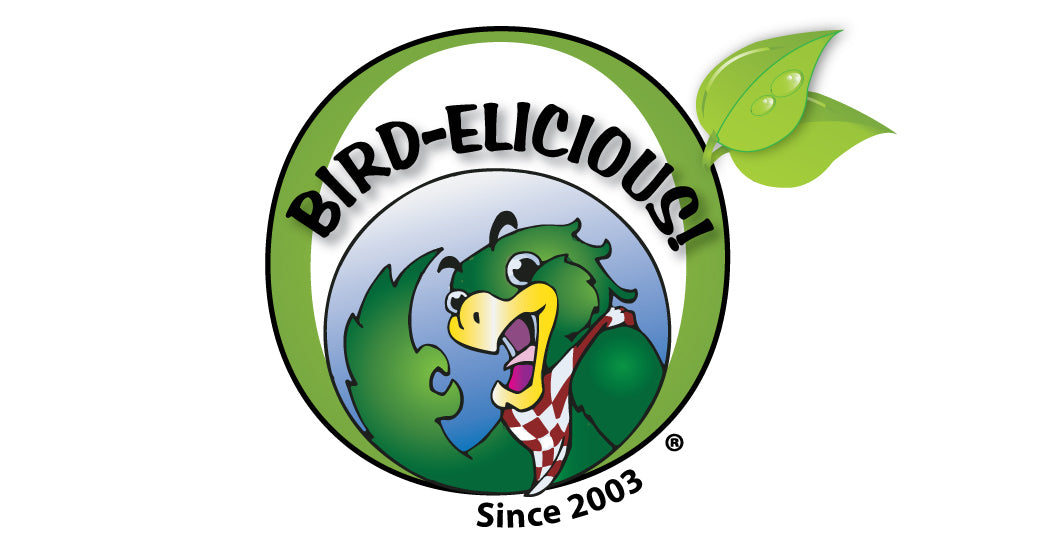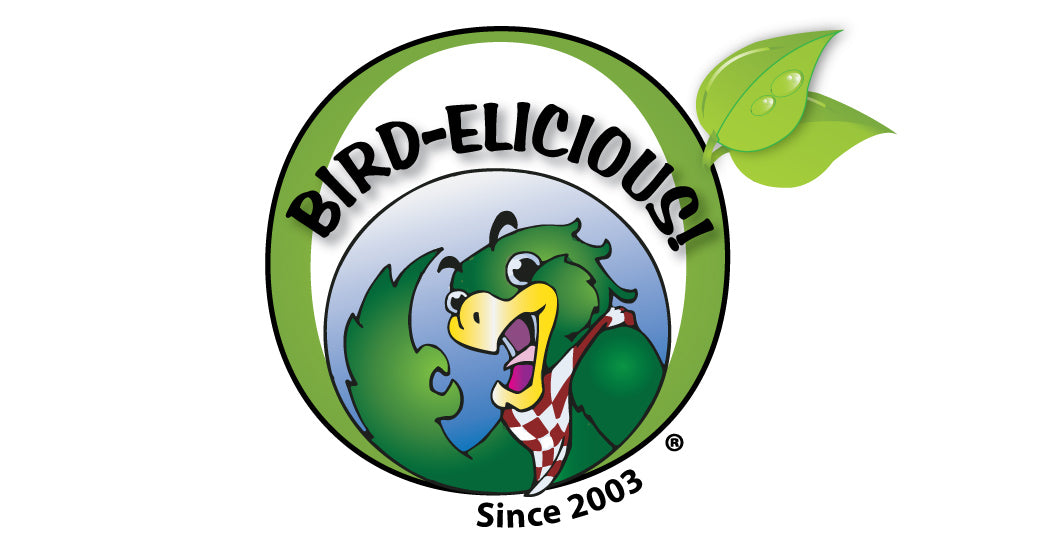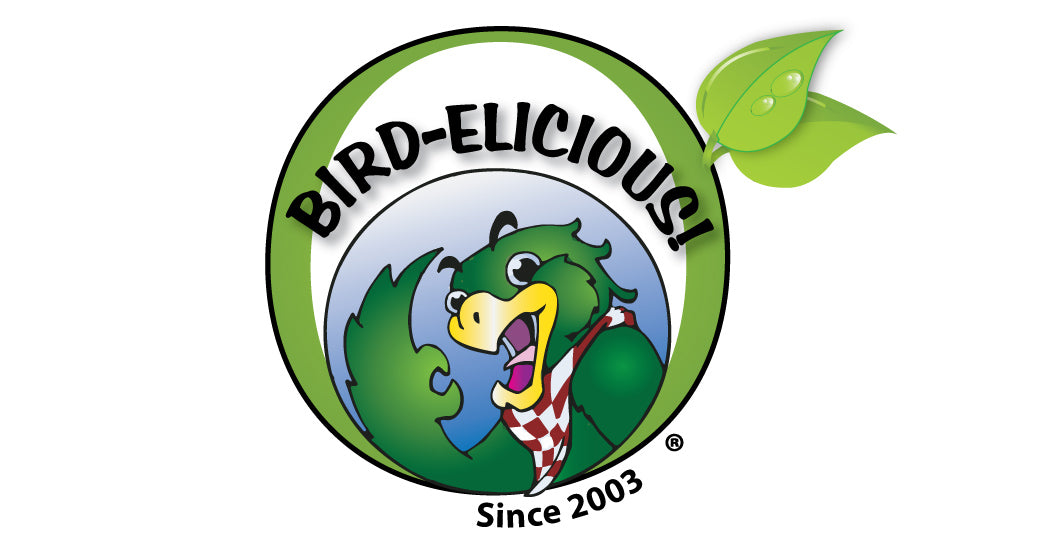I have people come to me on a frequent basis asking “Which is better to feed to my bird, flax seed or chia seed?”
It all depends on what you are trying to achieve in your bird’s diet, but I almost always opt for flax seed as a general rule of thumb.
Let’s take a look at both seeds.
Flax 100 grams:
Total Carbohydrate = 28.9 grams
Fiber = 27.3 grams
Omega 3s = 22813 grams
Omega 6s = 5911 grams
Protein = 18.3 grams
Vitamin A = 0.0 mg
Vitamin K = 4.3mg
Folate = 87.0 mcg
Choline = 78.7 mg
Calcium = 255 mg
Magnesium = 392 mg
Selenium = 25.4 mcg
Zinc = 4.3 mg
Chia 100 grams:
Total Carbohydrate = 43.8 grams
Fiber = 37.7 grams
Omega 3s = 17552 grams
Omega 6s = 5785 grams
Protein = 15.6 grams
Vitamin A = 44 mg
Vitamin K = ~ mg
Folate = ~ mcg
Choline = ~ mg
Calcium = 714 mg
Magnesium = 319 mg
Selenium = ~ mcg
Zinc = 4 mg
As we can clearly see flax seed is much higher in Omega 3s than chia seed. Flax is also higher in protein. Flax has a quantifiable amount of the important blood clotting agent known as Vitamin K whereas chia seed does not. In addition flax seed contains both vitamin Bs Folate and Choline. Folate is necessary for the hydrolysis (break down) and metabolism of dietary proteins. Without Folate there will be poor growth and regeneration of all muscle tissue, beak, talons, skin and feathers. Choline is key in the cleansing of the liver. While calcium is higher in Chia seed it serves no purpose if the seed is not sprouted prior to use due to the high levels of oxalate chia seeds contain. (Simply soaking will not be enough with chia seed. See below regarding “mucilage”) Flax seed is relatively low in oxalates. Oxalates bind calcium from absorption in the digestive tract. Oxalates are also histamine liberators. This spells trouble for our feather destroying birds. Histamines trigger more feather destruction in many feather destroying birds.
Furthermore, the ratio of calcium to magnesium is optimum in the flax seed; the calcium is way too high in the chia seed in ratio to the magnesium. Medical science now understands that without enough magnesium in the diet calcium is not completely absorbed into the metabolic system and instead is deposited into the main arteries and small blood vessels throughout the body as well as the brain. If there is not enough magnesium in the blood calcium deposits build up in the arteries and vessels potentially leading to cardiovascular disease and strokes. This is especially of concern where diets are high in the consumption of Omega 6s lacking in the appropriate amount of Omega 3s. It is not the cholesterol per se that causes heart attacks and strokes, but the plaque buildup as the result of consuming too many sticky Omega 6s and unabsorbed calcium due to the lack of magnesium to help with the total absorption of calcium in the diet. The result is the cascading effect of cholesterol sticking to this sticky mess in the arteries and vessels creating the disaster. Cholesterol is actually a steroidal hormone necessary for the uptake of Vitamin D in a living creature. Attempting to reduce cholesterol is to decrease natural hormones in the body as well to decrease the body’s natural ability to synthesize Vitamin D. Cholesterol is not the body’s enemy, too many Omega 6s along with the inability to absorb calcium is the enemy.
Flax must be ground in order to achieve health benefits, chia does not. However, let’s remember birds crack open seeds with the dexterity of their beaks. There really is no reason for us to pre-grind flax seed for our birds. On the other hand chia seed can be ground in advance without the worry of the powder becoming rancid due to the high amount of anti-oxidants contained within. If you are looking for a long shelf life of a processed food, chia seed is the option for you if you don’t mind less Omega 3s and less nutrition overall.
Mucilage
Then there is the case of “mucilage” both seeds intrinsically contain. Nature has placed this double protective layer around certain seeds in order that they may be protected from the harsh elements. Mucilage is what we see when we attempt to sprout these seeds. It is found most commonly in cruciferous classifications of seeds. This protective coating helps in anchoring the seed into the soil so it doesn’t blow away. It also helps hydrate the seed during the sprouting process while in harsh elements in Nature. Nutritionally speaking mucilage degrades into lipids and monosaccharides, specifically PLFA (phospholipids) and neutral sugars exotic birds require for optimum health! Phospholipids are extremely important to the health of our birds; they make up the membranes of each of the millions of cells in their bodies. Three of the most abundant monosaccharides found in the mucilage of flax and chia seed are glucose (29.4% of total identified sugars), followed by mannose (20.3%) and arabinose (19.5%). The knowledge we should gain from this information is that it is of most importance to soak our flax and chia seeds before feeding to our birds in order to achieve maximum nutrition! Once soaked we can then dehydrate the seeds in order to store for future use; the phospholipids as well as the monosaccharides have been activated and will remain so. Make sure you gently dehydrate at a temperature at or below 115 degrees to retain these delicate nutrients. I would recommend storing these activated seeds in your refrigerator in a dark, air tight container keeping out as much air and light as much as possible.
Let’s also remember that both flax and chia seeds contain “salicylates” and “histamines” placing both on the list of “do not feed” to feather destroying birds. Generally speaking all plant-based Omega 3s will trigger feather destroying birds due to the high content of salicylates and/or histamines they contain. When it comes to feather destroying birds we must look elsewhere for Omega 3s to complete their nutritional profile; we usually have to look to animal-based Omega 3s to fulfill our birds’ needs.
Happy foraging!
(Ref: http://nutritiondata.self.com/facts/nut-and-seed-products/3163/2; http://nutritiondata.self.com/facts/nut-and-seed-products/3061/2; http://ndb.nal.usda.gov/ndb/foods/show/3716;
http://ndb.nal.usda.gov/ndb/foods/show/3610; http://www.researchgate.net/publication/257584239_More_than_just_a_coating_Ecological_importance_taxonomic_occurrence_and_phylogenetic_relationships_of_seed_coat_mucilage; http://www.jstor.org/stable/4042251?seq=1#page_scan_tab_contents; http://www.botanicals.com/chia.php; http://www.innovateus.net/science/what-are-phospholipids.)
©10.30.15 Machelle Pacion Passion Tree House LLC All Rights Reserved




Leave a comment (all fields required)